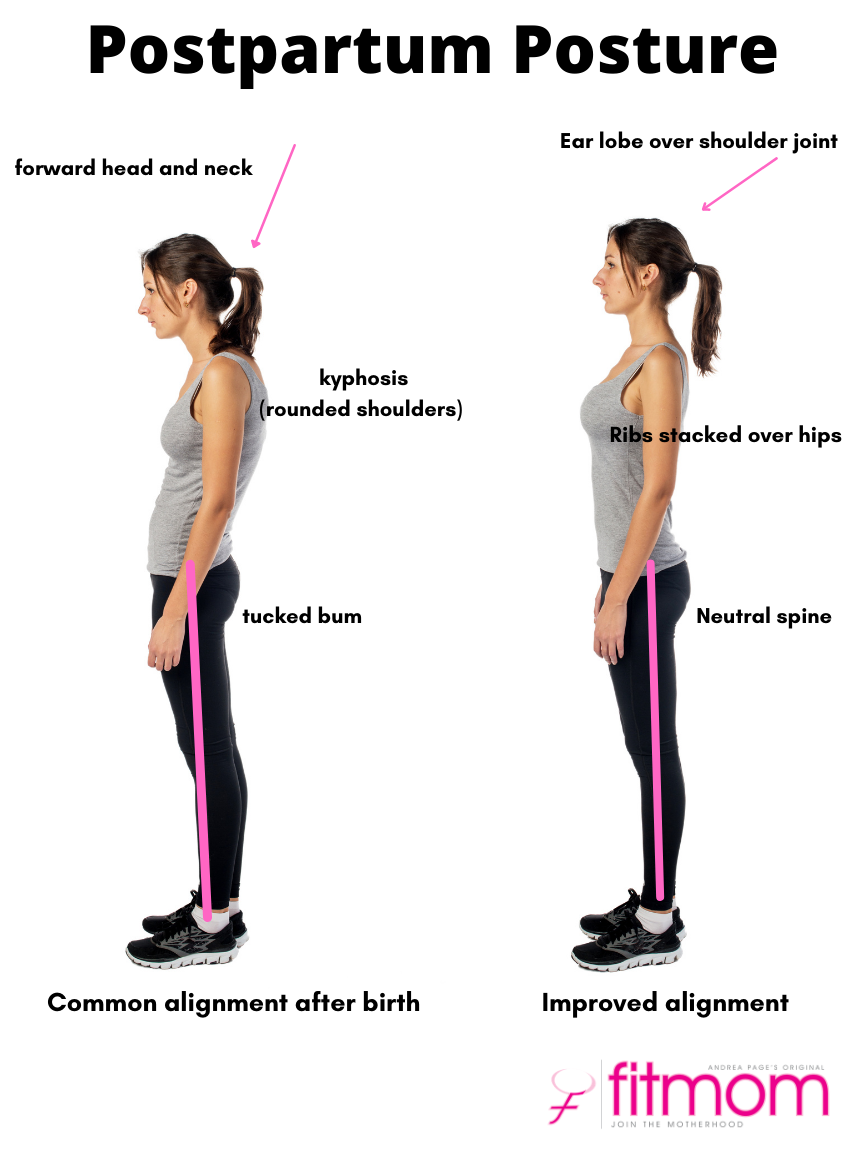Postural changes after Baby
Considerations for the postpartum body
For more than 10 years we’ve have had the pleasure of working with thousands of amazing people as they navigate the ins and outs of exercising after baby.
Many of the people we see at our classes are unsure of how to exercise again in their new postpartum bodies. We’re here to help make that transition easier.
So, we’ve come up with a few things you might want to consider as you work to re-integrate regular exercise into your life, whether you had your baby 6 weeks ago or a number of years ago.
BE PATIENT
This is our first and maybe most important tip! Your body has gone through tremendous changes and it takes time to recover from 9 months of pregnancy, followed by labour and delivery. Hint: This can often be longer than the 6 week benchmark many of us use as a guideline, if you’ve had a cesarean or a more complicated vaginal birth. Your body has gone through tremendous changes and it takes time to recover (usually longer than the 6 week benchmark may of us use as a guideline).
Remember it took about 40 weeks to grow your baby, give yourself the time to heal and recover properly. Expecting to train the same way you did before you became pregnant is crazy! Your body is different, and it always will be. Training the same way you did before you gave birth can set you up for possible injury (due to instability in your joints and ligaments) and often won't yield the same results.
TRAIN FOR STRENGTH AND FUNCTION
Consider training for strength and function. This often means re-learning breathing mechanics, how to effectively recruit the pelvic floor and abdominal muscles then gradually adding in higher progression exercises. Adjusting to the demands of parenting and caring for little people is hard. This is why we encourage you to start back slowly. Instead of over committing yourself to “exercising” everyday, look for opportunities to move more in your day (walking, cleaning, playing on the floor). You will be more successful if you set smaller, realistic and achievable goals. Consistency is more important than motivation. Slow and steady wins the race. Avoid rapid weight loss and fad diets. If it sounds too good to be true, it probably is!
CORE AND PELVIC FLOOR STRENGTH (OR WEAKNESS!)
Watch for warning signs of poor core & pelvic floor strength. Leaking urine (even just a little bit, that's not normal!), urgency issues, chronic pelvic or low back pain, heaviness in your pelvis, or straining/bulging of the abdomen are all symptoms indicating a weak core. Don't ignore these symptoms, instead talk with me or connect with one of our local pelvic floor therapists and work towards improving core strength.
POSTURAL CHANGES AND ALIGNMENT
We also encourage you to address postural changes and work to improve your alignment. Adaptations to pregnancy and postpartum taxes your skeletal system, almost everyone has some amount of rounded shoulders, tucked tailbone, weak glutes and overly forward head and neck. Becoming aware of your personal tendencies and working to adjust your body’s positioning will increase comfort and reduce pain.
Here is a short list of some of the most common habits I observe:
tucking your bum under
thrusting your ribs
sucking in your tummy
gripping your bum
chest breathing/belly breathing without allowing your diaphragm to move
It’s not unusual to hear me say to so many that I coach “You can’t change what you aren’t aware of”. As you start to pay more attention to your habits you can work towards improving them. I promise you, it’s worth it in the long run!
Do you have questions about exercising during pregnancy or after baby? Drop me a line and ask away! We are always happy to share with you.
Ready to #jointhemotherhood Our NEW to FITMOM Intro Pass is a great way to check out our classes. Grab your pass today!
Updated February 2020
Originally Posted February 2017


